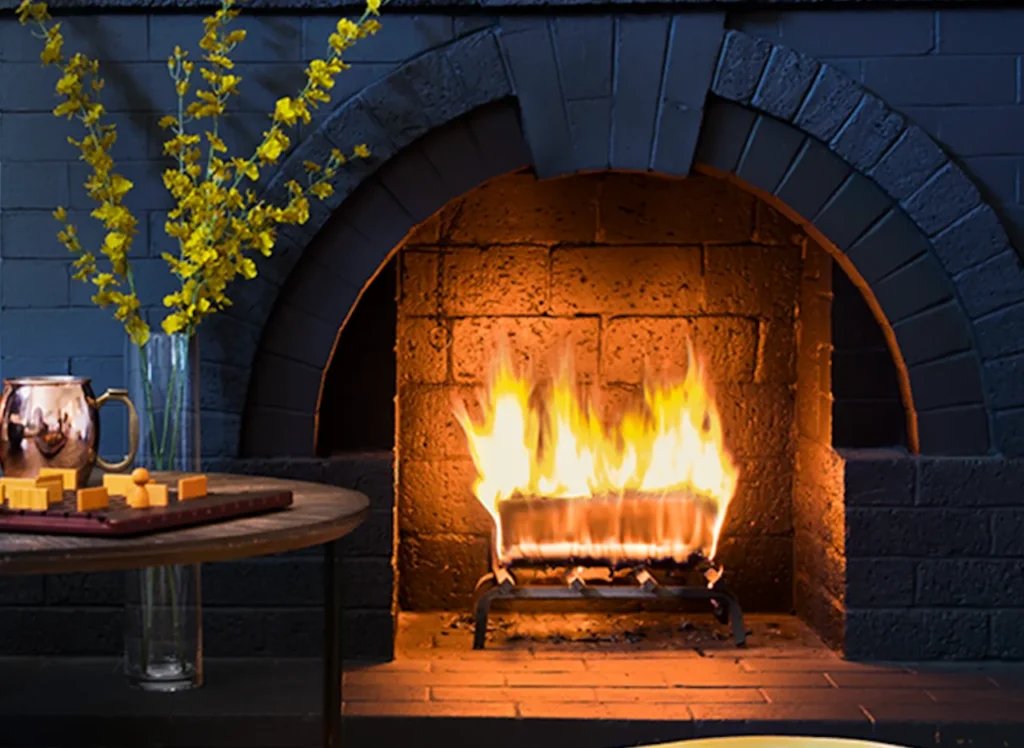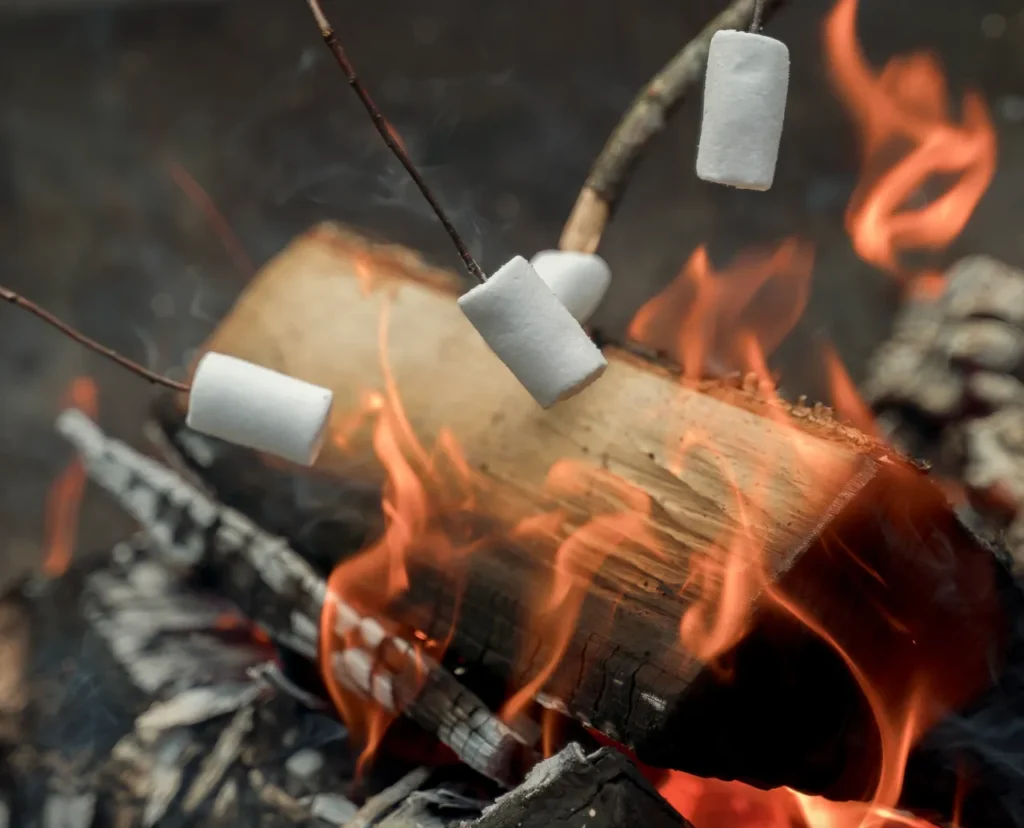For me, the main benefit of Duraflame logs is that you only need one log for a decent fire for a few hours. Duraflame logs have twice the BTU of regular wood and let off enough heat to keep your house warm the entire time they are burning
But since these logs are manufactured you might wonder how they stack up safety-wise against wood.
Duraflame logs are generally considered safer than wood if you’re concerned about carbon monoxide emissions because they emit 75% less carbon monoxide than wood and burn cleaner. They emit 80% fewer fine particles and 90% less hazardous air pollutants than wood.
However, they do release polycyclic aromatic hydrocarbons (PAHs) which can be harmful to your health. Although it's important to note that wood burning also releases PAHs and it's unclear which type of solid fuel produces more PAHs.
“Synthetic log burning produced elevated levels of almost all measured PAHs compared to the combustion of wood, but not higher levels of the other pollutants measured…However, other reports have found similar PAH levels across synthetic logs and natural wood logs or possibly lower PAH levels for synthetic logs”
Indoor Air Pollution Exposure from Use of Indoor Stoves and Fireplaces in Association with Breast Cancer: A Case-Control Study
Duraflame logs are also less likely to explode because they don’t have air pockets and knots like wood, are designed to burn slowly and evenly and less likely to have sudden flame surges.
They’re also only safe to burn in open hearth and zero clearance manufactured fireplaces (otherwise they could cause damage).
It's also important to note that only the outdoor duraflame logs are safe to cook over.
What Makes Duraflame Logs Safer Than Wood? Are They?

Duraflame logs are generally considered safer than wood because they burn cleaner and emit fewer harmful toxins and carbon monoxide. However, very few if any studies have been done into the different long term health implications of firelogs vs regular wood burning.
There is just one study that I am aware of that looked at a potential link between firelogs and breast cancer.
In her study “Indoor Air Pollution Exposure from Use of Indoor Stoves and Fireplaces in Association with Breast Cancer: A Case-Control Study,” epidemiology doctoral student from the Gillings School of Global Public Health, Alexandra White, said:
“Certainly the burning of real or synthetic logs releases toxic pollutants into the air, but we found that burning synthetic logs significantly increased the risk of developing breast cancer, whereas burning the wood logs did not.”
White cautions that the results are not definitive and that further study is needed.
The study goes on to state that one study showed that firelogs produced more PAHs compared to regular wood while other studies concluded the opposite.
It also notes that the usage data collected was in the 1990's before the Environmental Protection Agency started endorsing certified indoor/putdoor fireplaces with lower emissions as well as before synthetic logs moved away from using petroleum wax in favor of cleaner burning vegetable waxes.
In the early 2000s, Duraflame removed petroleum-based paraffin wax and began using plant-based wax instead and a recent study from OMNI showed a significant decrease in carbon emissions due to these new waxes used.
Are Duraflame Logs Safe To Leave Unattended?

Firelogs can explode but are far less likely to do so than wood because they don’t have air pockets or knots.
After lighting your Duraflame log and leaving it in the middle of your fireplace or pit, you can essentially leave it to burn for a few hours without having to stoke it.
As long as you use your Duraflame log according to the instructions, there should be no dangerous surprises. That said, it’s still advisable to monitor your duraflame log from afar in case a rare problem occurs and it starts smoking a lot (as shown in the video below):
Also, according to duraflame, their logs emit:
- 75% less carbon monoxide
- 90% less hazardous air pollutants
- 80% fewer fine particles than wood
The only time that Duraflame logs wouldn’t be safer than wood is if:
- You add a duraflame log to an already lit or raging fire. One duraflame log has about twice the heat energy as 2-3 pieces of wood so adding one to a big roaring fire could cause a huge flame surge or uncontrollable fire.
The same would apply if you added wood to a duraflame log.
- You roast marshmallows or cook food on a non-outdoor duraflame log. Only the outdoor duraflame logs are food safe and the other logs could leave a paraffin-like taste in your food and toxic particles (however, this is unlikely to harm you if you only do it once or twice).
- You don't allow enough airflow so the firelog smokes – If your firelog is smoking chances are you don't have enough airflow around it and this improper burning can lead to more pollutants in the air.
When Is Regular Firewood Better Than Duraflame Logs?

Regular firewood is better than Duraflame logs when you have a wood stove or don’t have a chimney that vents the fireplace effectively. It’s also better if you don’t have an open hearth or zero clearance manufactured fireplace because Duraflame logs haven’t been approved for them.
Normal firewood is also better from a cost perspective if you’ve done a lot of yardwork and have lots of leftover branches and twigs. One of the problems with Duraflame logs is that they can be more expensive than wood if you live somewhere with free access to firewood.




